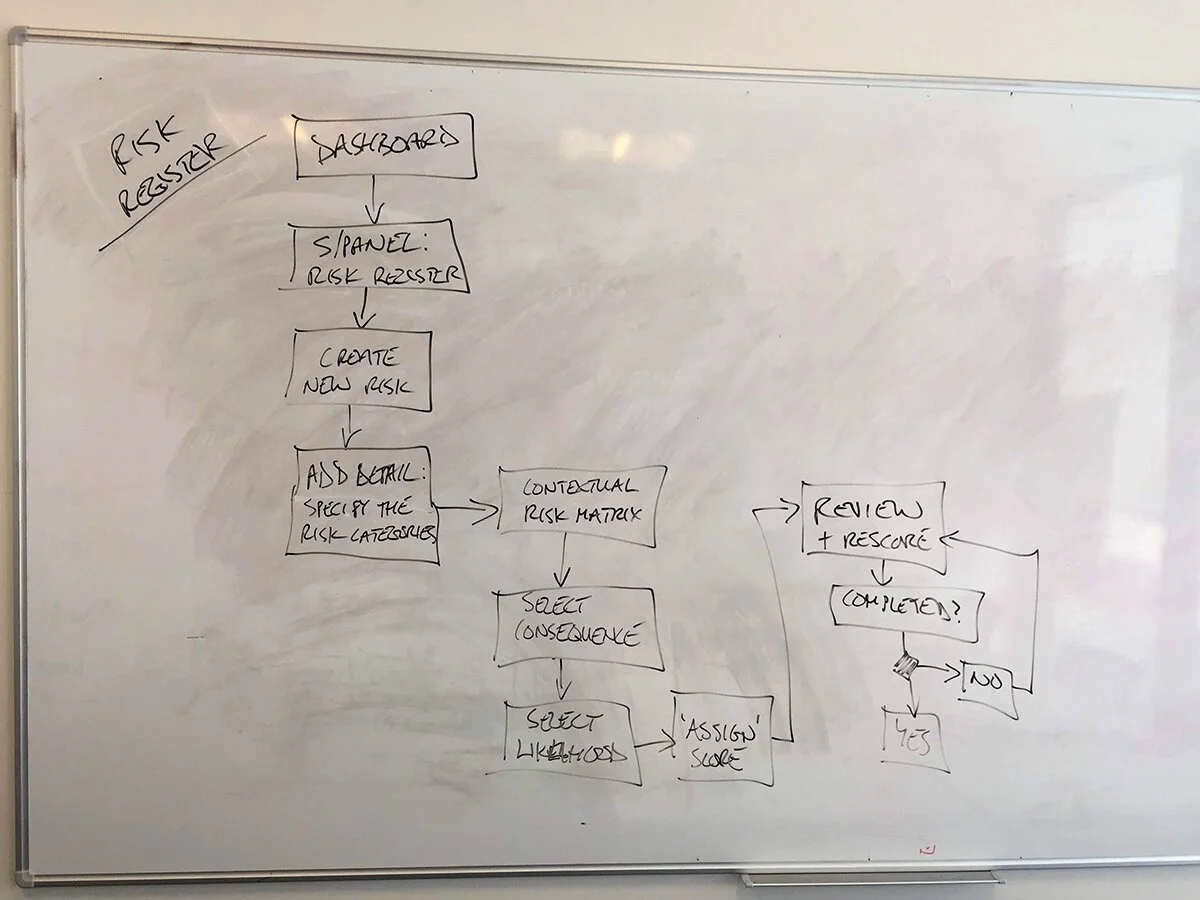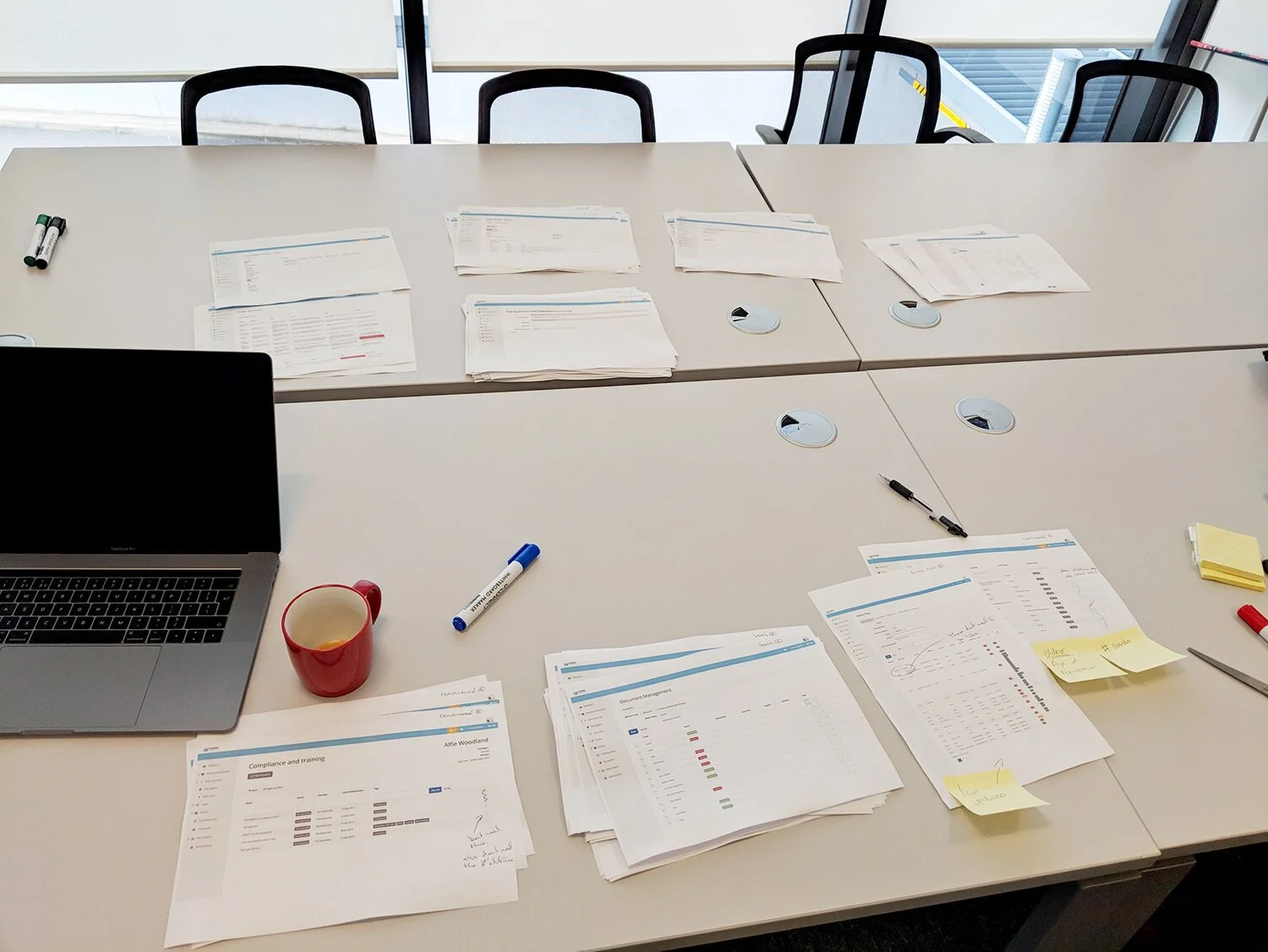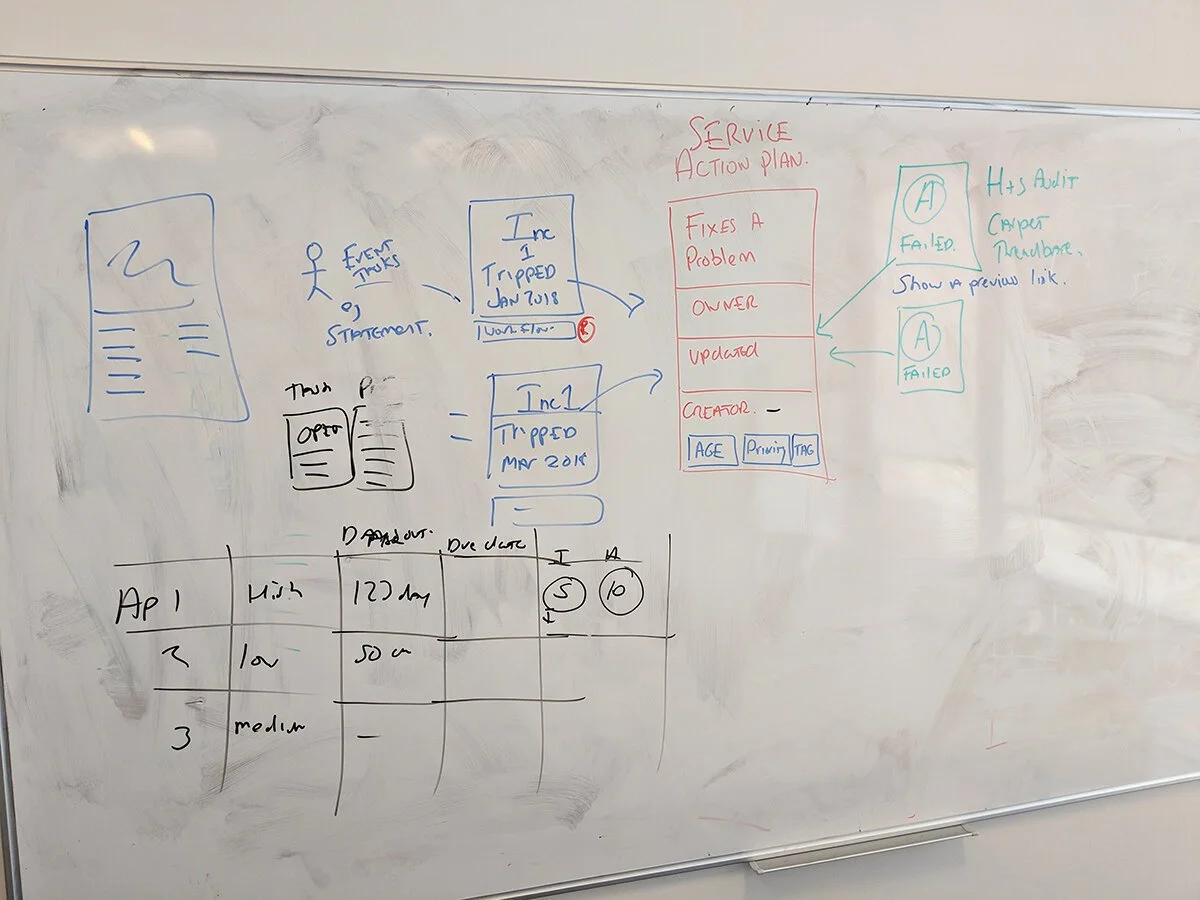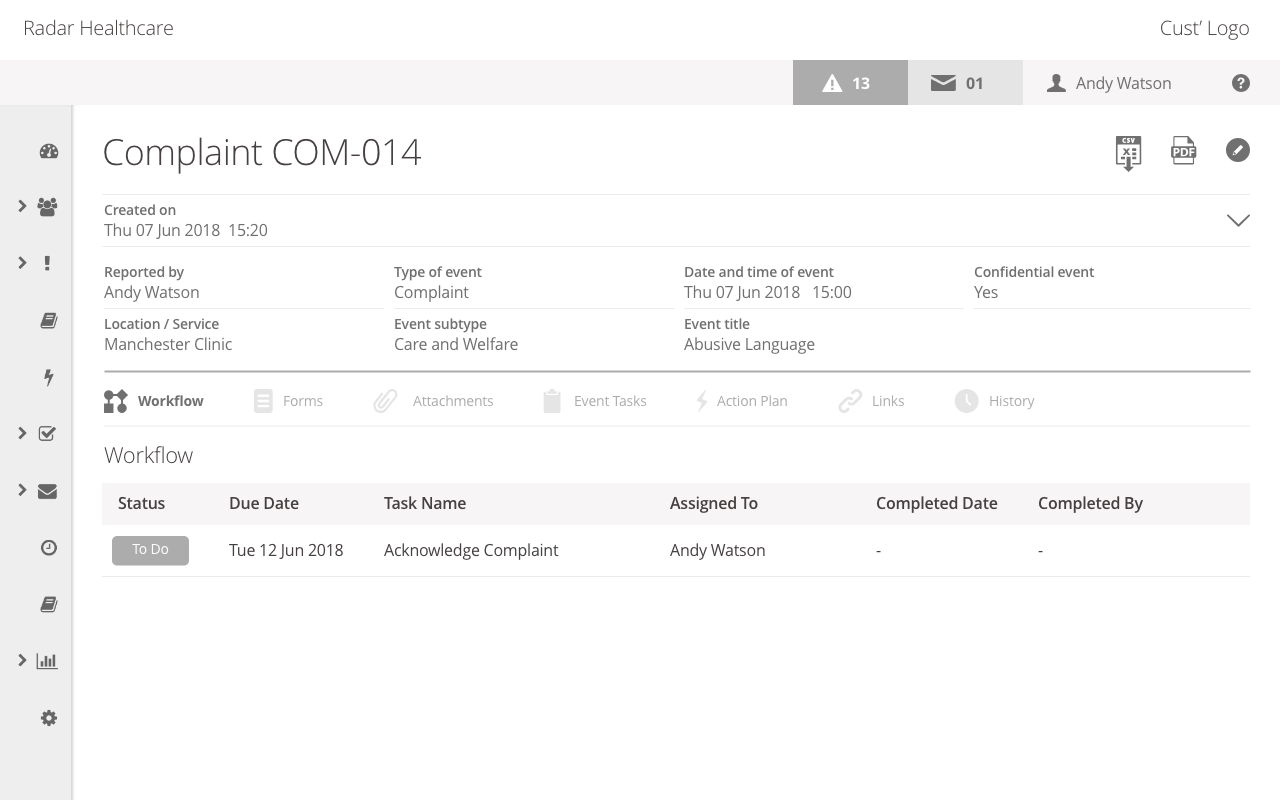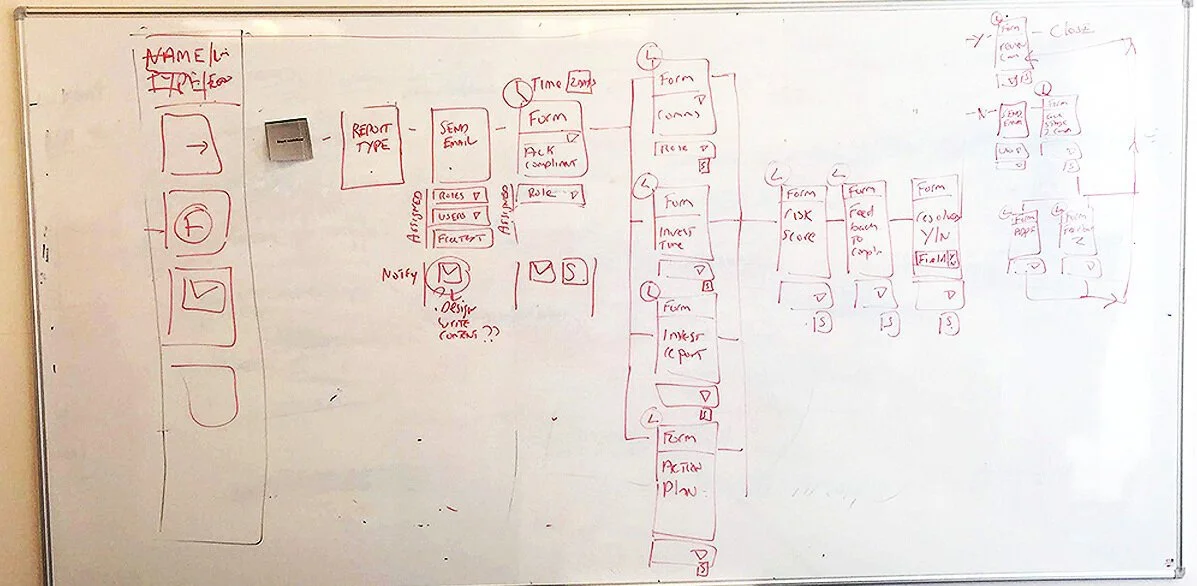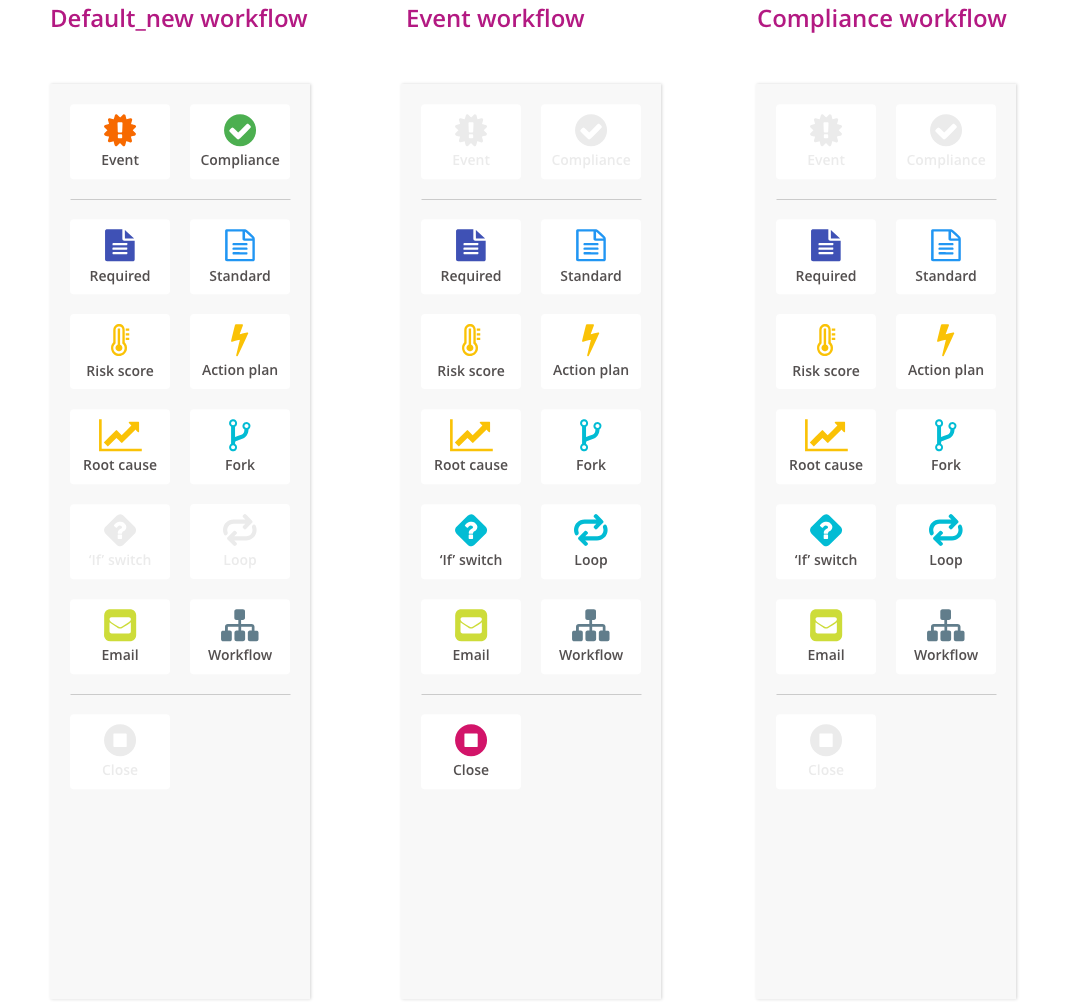Radar Healthcare
Radar allows healthcare providers to stay compliant by following each organisation’s particular processes and practices. It records events, risk assessments and audits create action plans to mitigate and resolve issues, tracks workforce training and appraisals.
Problem
The software was technically sound and enabled an organisation to achieve its goals. It wasn’t, however, that nice to look at or use due to a series of inconsistencies in user interaction. Some of the areas within the software were bloated with unnecessary steps and it needed some work to make it simpler and more delightful to use.
Discovery
My starting point was to perform a heuristic review of the software and to understand what it can do, and why. After this, I ran a series of stakeholder interviews to get a viewpoint from the Radar team’s perspective. This highlighted their attitudes, expectations, and pain points with the current system.
Task analysis sessions were run to map out the steps for each section of the software. This enabled me to see how complex the user journey was for each section of the software and whether there was any potential to simplify the flow and make the software easier to use.
This was followed by a screen sorting exercise to find commonalities within the content in order to figure out how many template styles were required. The purpose of this was to introduce more consistency and structure to reduce the learning curve for users.
Ideation
Next came sketching and initial wireframe designs.
Using whiteboards, I ran sessions with the team to explore possible solutions and ways to simplify the flows. These were then captured and worked up into more formal wireframes and prototypes to test our theories.
In addition to making improvements to the existing software, I was tasked with designing a new workflow builder. This was to give users the freedom to tailor their own unique processes and ways of working into the system rather than having to rely on Radar to code it for them, from scratch.
Iteration
Once the screens were sense-checked with the internal team, customer workshops were set up to get further feedback on what did and, more importantly, what didn’t work for them in the software. Towards the end of each session, a show-and-tell was done with the proposed changes done-to-date to see whether they were on the right track.
Conclusion
My work with Radar Healthcare helped to further reinforce its reputation as a robust and trusted software partner for the healthcare industry.




